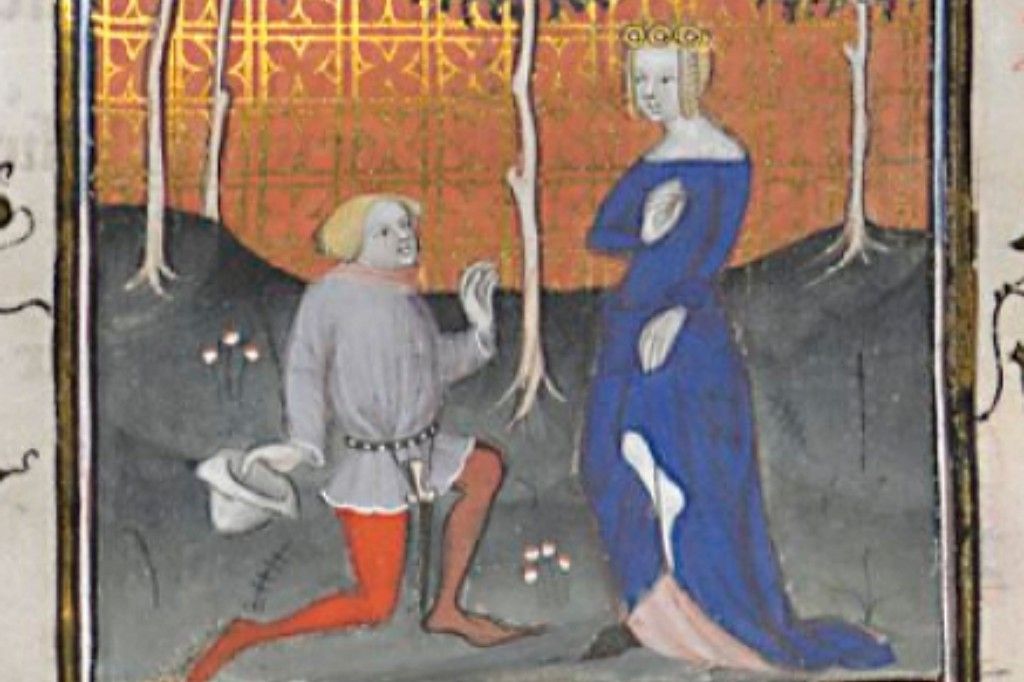Welcome to Harmonia Uncut, the podcast that brings you modern performances of very old music. I’m Wendy Gillespie, inviting you to join me to take one step closer to how music used to be – live! However, we are nothing if not au fait with the real world, so time travel is involved.
Now we are at the Church of the Holy Cross in Santa Cruz, CA on February 1, 2020. Vajra Voices are performing, directed by Karen R. Clark, with guest artist Mary Springfels . Vajra Voices? The Sanskrit word “vajra” symbolizes the thunderbolt of clarity and the indestructible nature of the diamond, which signify strength of spirit. Vajra Voices explores both early and modern music in new settings, working with other musicians, composers, and dance companies.
This program, entitled “In a Medieval Garden,” offers works mostly by the twelfth-century German Abbess Hildegard von Bingen and the fourteenth-century French poet Guillaume de Machaut. The program is built around gardens - gardens for meditation, vegetables, medicines and pleasure, culminating in the complete Lai of the Fountain by Guillaume de Machaut, which is what I’ve chosen to share with you first. Machaut’s “fountain” is a metaphorical one, not even mentioned until the seventh verse of the poem, when the poet compares the Trinity – Father, Son, and Holy Ghost – to the source, the stream, and the fountain itself, as you’ll hear explained at the outset.
I’m going to only play the beginning and end of the Lai of the Fountain, the first and twelfth verses Machaut’s poem. The verses alternate between solo settings and canons, or rounds, for three voices – a very sophisticated Row row row your boat, if you will - so stanza one is solo and stanza 12 is sung as a round. These two stanzas, and only they, share the same melody, albeit the second iteration of the melody, the one set as a round, is a fourth lower in pitch, which really makes it sound quite different. Also, bear also bear in mind that in between these two verses, you will have been mesmerized by nearly half an hour of solid text and music! So, Machaut has brought us full circle with his music, though his text goes somewhere quite other nearly immediately. For we begin in the world of courtly love and the unkind lady, but by verse two the poet has decided to go to another, more welcoming and dependable lady, the Blessed Virgin Mary, and there he stays for the rest of the poem:
MUSIC: Lai of the Fountain
The beginning and end of Guillaume de Machaut’s Lai of the Fountain was performed by Vajra Voices – of course, they did the other 10 verses, too! (You just didn’t hear them.), with Mary Springfels playing the citole. I hope that hearing even that much gives you an inkling of the effect of a much longer poetic and musical form and makes you want to hear the whole thing!
We turn now to a very different musical form that Machaut also used to great effect - the motet. In the fourteenth century, a motet was built around a slow-moving part called the “tenor,” which as its Latin root might suggest,” gives the other parts something to hang onto. Machaut’s added voices each fit nicely with the tenor, but heard together, we get some very interesting sonic crashes. The two voices also declaim separate texts simultaneously, resulting in one rather complicated, esoteric, and hypnotic whole.
Let’s hear Vajra Voices sing Machaut’s motet whose top line begins, “Quant a moy”; its second line, “Amor et biauté.” The tenor line, (Mary Springfels playing the vielle this time), simply bears the text “Amara valde,” “bitter love,” which is echoed in the top voice’s final words, which uses two different meanings of the French ‘amer’ - ‘bitter’ and ‘love’ !
MUSIC: Motet
We heard Guillaume de Machaut’s motet, referred to by the opening words of each of its three texts, as Quant a moy/Amor et biauté/Amara valde, interpreted by Vajra Voices in a concert with multi-instrumentalist and self described “veteran of the American early music movement” Mary Springfels as guest artist. The singers in Vajra Voices are Amy Stuart Hunn, Allison Zelles Lloyd, Phoebe Yevtovich Rosquist, Celeste Winant, and Karen R. Clark. Their concert, called “In a Medieval Garden,” took place in the Church of the Holy Cross in Santa Cruz, CA on Feb 1, 2020. It was reviewed in the Monterey Herald with words like “stunning” and “exquisite.” Aren’t you glad you got to hear some of it? Many thanks to Karen R. Clark, the director of the ensemble, for sharing Vajra Voices with us—what a treat!
We’d be interested in your reaction to anything you’ve heard on this podcast. You can find Harmonia on Facebook, or leave a comment or question any time by visiting harmonia early music dot org. This has been Harmonia Uncut, and I’m Wendy Gillespie, thanks joining me!










